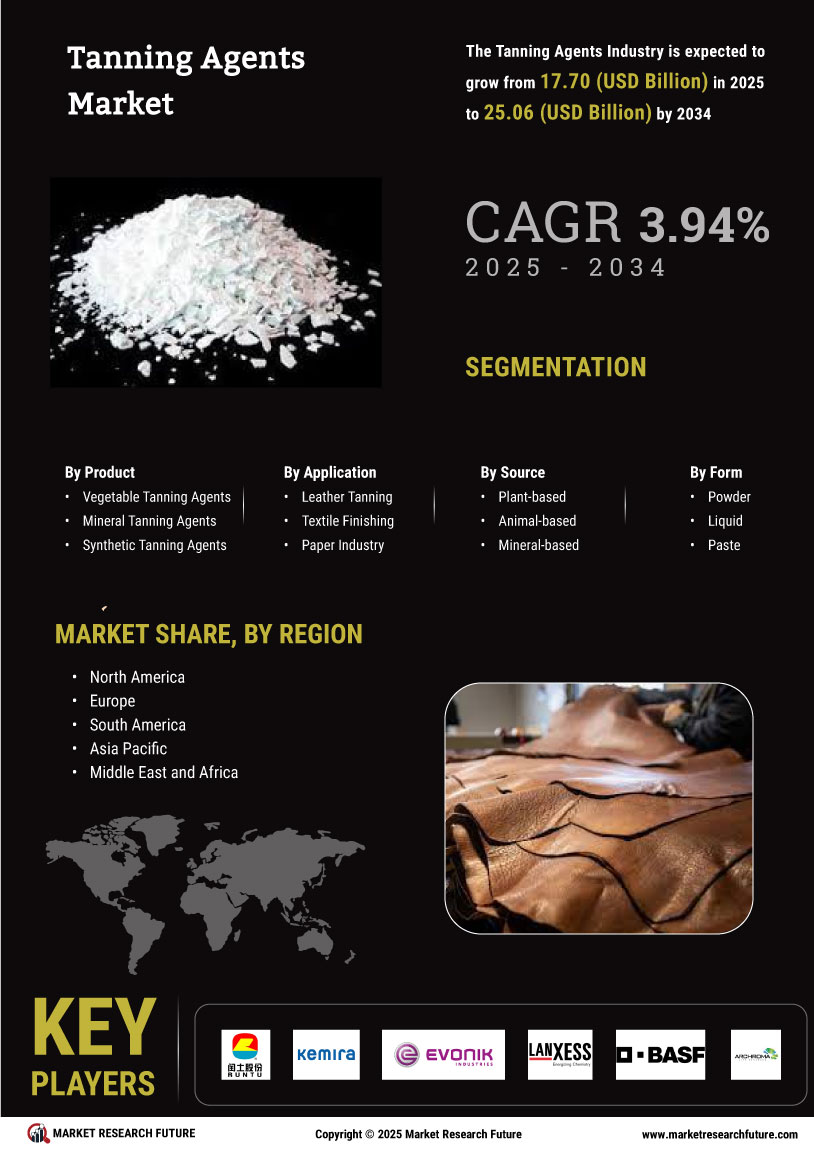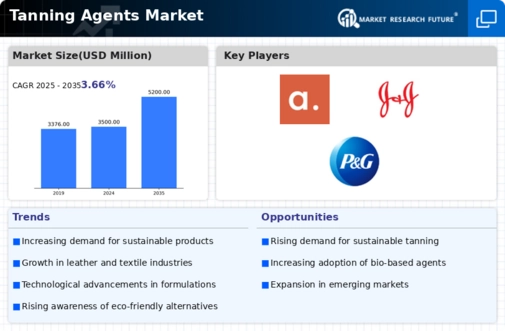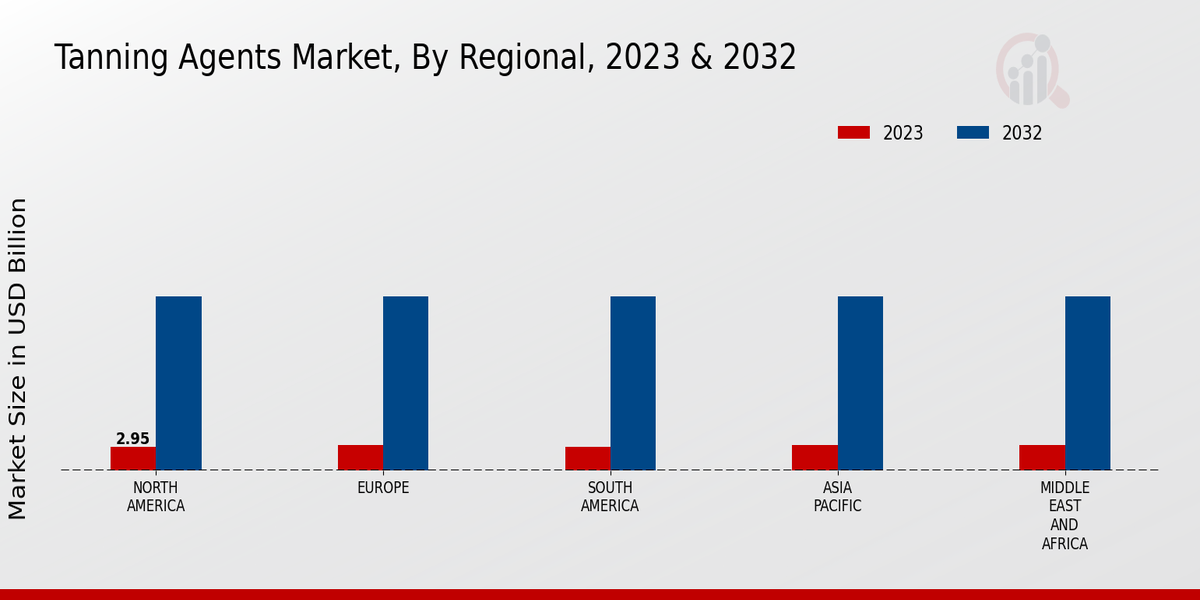Growth of the Footwear Sector
The footwear sector significantly influences the Global Tanning Agents Market Industry, as leather remains a preferred material for high-quality shoes. The increasing consumer inclination towards premium footwear brands drives the demand for effective tanning agents. As the market evolves, the footwear industry is expected to contribute to the overall growth, with projections indicating a market value of 5200 USD Million by 2035. This growth is likely to be fueled by the rising disposable incomes and changing fashion trends that favor leather footwear. Consequently, the demand for tanning agents that ensure durability and comfort in footwear production is expected to rise.
Market Trends and Projections
Rising Demand for Leather Goods
The Global Tanning Agents Market Industry experiences a notable surge in demand for leather goods, driven by the fashion and automotive sectors. As consumers increasingly favor high-quality leather products, the market for tanning agents is expected to grow significantly. In 2024, the market is valued at approximately 3500 USD Million, reflecting the industry's robust expansion. The automotive industry, in particular, is projected to contribute substantially to this growth, as manufacturers seek premium leather for vehicle interiors. This trend suggests a sustained demand for effective tanning agents, which are essential for producing durable and aesthetically pleasing leather.
Emerging Markets and Global Trade Dynamics
Emerging markets are becoming increasingly relevant in the Global Tanning Agents Market Industry, as globalization facilitates trade and access to new markets. Countries in Asia and Africa are witnessing a surge in leather production, driven by both domestic consumption and export opportunities. This trend indicates a potential for increased demand for tanning agents in these regions, as local manufacturers seek to enhance the quality of their leather products. The interplay of global trade dynamics and regional market growth suggests that the tanning agents market may experience a shift, with emerging economies playing a more prominent role in shaping future trends.
Increasing Awareness of Sustainable Practices
Sustainability emerges as a pivotal driver in the Global Tanning Agents Market Industry, as consumers and manufacturers alike prioritize eco-friendly practices. The shift towards sustainable tanning processes, such as vegetable tanning, indicates a growing preference for environmentally responsible products. This trend is likely to influence the market dynamics significantly, as companies adapt to meet consumer expectations. The increasing regulatory pressures on chemical usage in tanning processes further underscore the importance of sustainable practices. As a result, the market may witness a transformation, with a potential increase in demand for sustainable tanning agents that align with these evolving standards.
Technological Advancements in Tanning Processes
Technological innovations play a crucial role in shaping the Global Tanning Agents Market Industry. Advances in tanning technologies, such as the development of synthetic tanning agents and improved machinery, enhance efficiency and reduce environmental impact. These innovations not only streamline production processes but also improve the quality of the final leather products. As the industry embraces these technologies, it is likely to witness a steady growth trajectory. The anticipated compound annual growth rate (CAGR) of 3.66% from 2025 to 2035 reflects the potential for continued advancements in tanning processes, which may further drive market expansion.


 Source: Primary Research, Secondary Research, MRFR Database and Analyst Review
Source: Primary Research, Secondary Research, MRFR Database and Analyst Review

